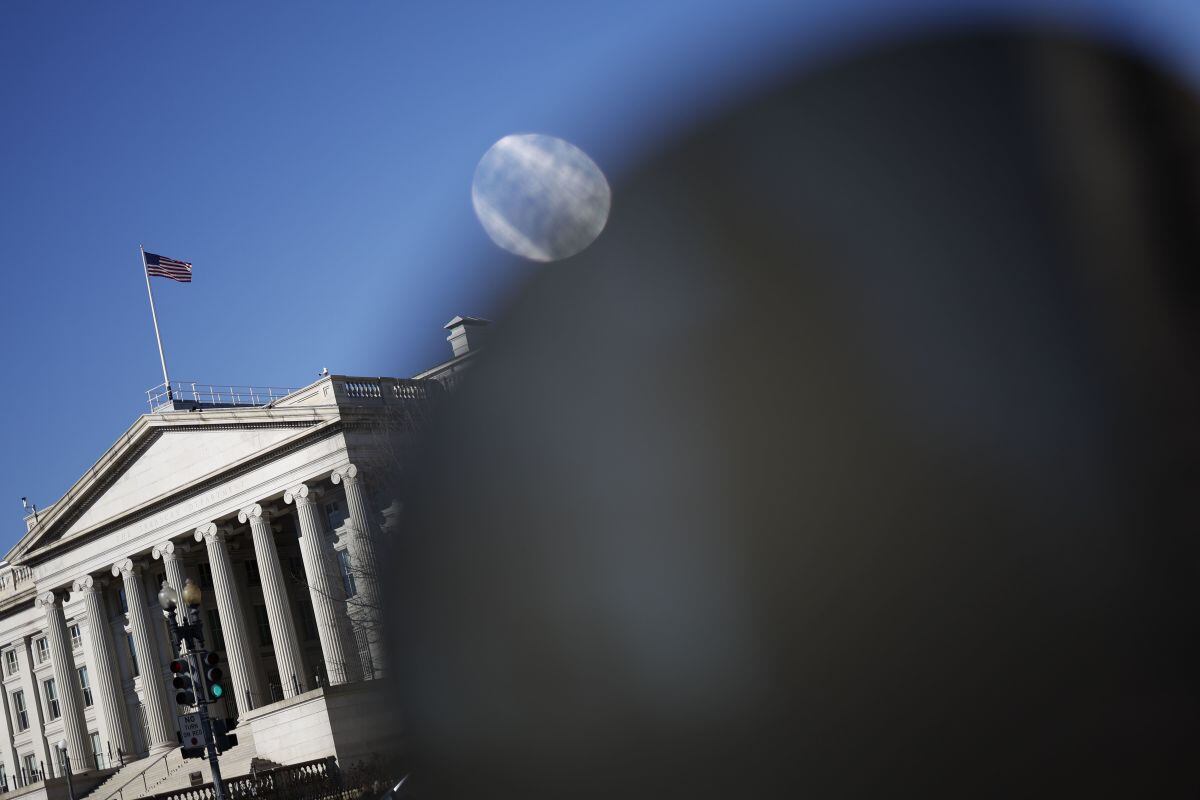
Officials at the US Federal Reserve will meet again next week amid persistent inflation, though now they will face the first sharp fallout from aggressive interest rate hikes the central bank approved last year.
The sudden failure of Silicon Valley Bank last week is not expected to stop the fed keep raising rates at their March 21-22 meeting as inflation is still well above the Fed’s 2% target and central banker Jerome Powell has indicated that monetary policy may need to be further more aggressive.
However, it could add a dose of caution to the monetary policy debate and undermine the feeling – common until now among the authorities – that the decisions of the fed they hadn’t made somethingwould break” in an economy where spending and job growth have seemed immune to the shock of higher rates.
The bankruptcy of SVB, which fed came to see a potentially systemic impact if bank depositors suffered losses, prompted the institution to announce a new bank credit line on Sunday in an effort to maintain confidence in the system, which effectively puts it back in business emergency loans, even while trying to squeeze credit in general with higher rates.
Given the stakes, this dissonance seems inevitable and could be accompanied by a somewhat more dovish approach to monetary policy if risks are seen to be intensifying.
“The threat of a systemic disturbance in the banking system is small, but the risk of stoking financial instability could well encourage the fed to opt for a smaller rate hike at the next meeting”, he wrote on Friday Bob Schwarzeconomist of Oxford Economicsafter the closure of the SVB by regulators and as officials began to examine how to respond to the biggest bank failure since the 2007-2009 financial crisis.
The next meeting of the fed It was shaping up to be something of a reality check as policymakers try to understand why last year’s rapid rate hikes haven’t had more of an impact on the pace of price increases.
The inflation rate for January increased, while the Atlanta Fed’s real-time projection as of March 8 showed a Gross Domestic Product (GDP) expansion of 2.6% per year, well above the economy’s underlying potential of about the 2%.
As a result, the authorities were poised to raise the expected rate path again, the third time in two years of fighting inflation that the US authorities would change on the fly after price increases turned out to be faster, more extensive and more persistent than anticipated.
The February jobs report, released on Friday, showed the unemployment rate rising to 3.6%. More importantly for the Fed, monthly wage growth slowed even as the economy continued to add jobs, a result that leaves open the possibility that the Fed will pass a rate hike of a quarter or so. half a point at your next meeting.
By late Sunday, following the emergency measures announced, the probability of a half-point rise had dropped to less than one in five.
Highest end point?
New inflation data to be released on Tuesday and retail sales data on Wednesday have the potential to push policymakers in either direction at the meeting, which will end on March 22 with a new statement from the Federal Open Market Committee and screenings aired at 1800 GMT, and a Powell press conference at 1830 GMT.
While investors now see a less likely return of larger rate hikes, questions remain as to how much the Fed will raise overall. In remarks to Congress last week, Powell noted that new projections beyond March would likely be higher than previously expected, in order to rein in inflation to the central bank’s 2% target from levels of more than double.
In December, most officials expected the top federal funds rate to be 5.1%. In their last public comments before the start of a quiet period leading up to the meeting, Fed officials also said they were prepared for a more aggressive response if upcoming data shows they lose more ground on inflation.
“The final level of interest rates is likely to be higher than anticipated”Powell said in testimony before Congress that reset expectations for where the fedpushed up US Treasury yields and triggered a sell-off in equity markets.
In the press conference on February 1, instead, he focused on the “disinflationary process” that I saw take root.
However, events since then have raised some questions among investors as to whether the officials of the fed They will go ahead with this, and much of the immediate pressure on bond yields and rate expectations eased after Friday’s jobs data, and weekend moves by the banking sector to deal with the Silicon collapse. Valley Bank also influenced the change in trend.
Still strong?
Government reports released after Powell’s latest press conference showed the central bank’s preferred measure of inflation had risen slightly to an annual rate of 5.4%.
The revisions from previous months also erased some of the gains that policymakers had relied on when they decided to cut to quarter-point rate hikes at their last session. A study of the fed Last week’s New York data also suggested that current inflation was being driven more by persistent factors and less by cyclical or sectoral influences that could dissipate more quickly.
It is not the first time that the fed is surprised by data updates after the fact. In autumn 2021, the first monthly employment reports appeared to show a weakening labor market, making discussions about when to start tightening monetary policy less urgent. By the end of the year, revisions showed that hundreds of thousands more jobs had been added than initially estimated.
Source: Reuters
Source: Gestion
Ricardo is a renowned author and journalist, known for his exceptional writing on top-news stories. He currently works as a writer at the 247 News Agency, where he is known for his ability to deliver breaking news and insightful analysis on the most pressing issues of the day.












